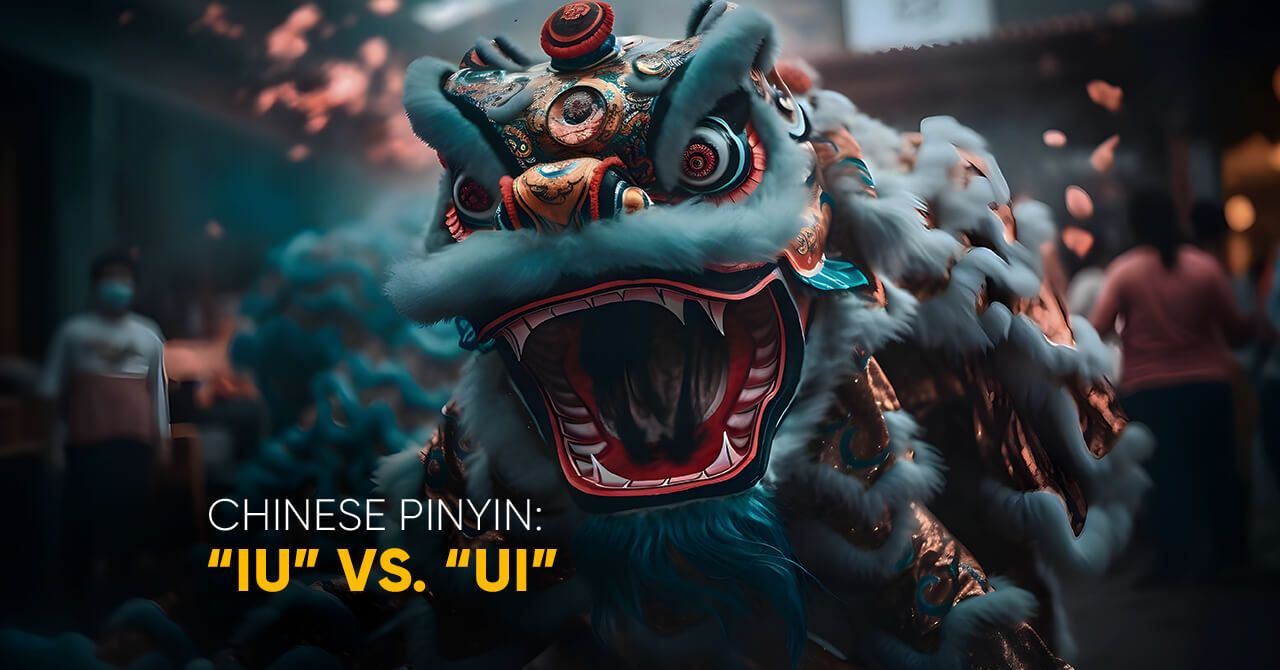
What You Need to Know About Chinese Pinyin of “iu” and “ui”
This misunderstanding arises because “iu” and “ui” are actually shortened forms of “iou” and “uei,” respectively, as defined in the Hanyu Pinyin Guifan (汉语拼音规范).
Beginning learners of Pinyin often misinterpret the pronunciation of “iu” and “ui.” The intuitive approach—pronouncing “iu” as “i” + “u” (sounding like “yu”) and “ui” as “u” + “i” (sounding like “we”)—is incorrect.
Why “ui” and “iu” are often pronounced incorrectly
This misunderstanding arises because “iu” and “ui” are actually shortened forms of “iou” and “uei,” respectively, as defined in the Hanyu Pinyin Guifan (汉语拼音规范).
Pronouncing “iu”
When pronouncing “iu,” you begin with a clear and prominent “i” sound. The following “ou” is pronounced softly, briefly, and less distinctly, with relaxed lips. The transition from “i” to “ou” is smooth and continuous, without any interruption in airflow. The English word “yo” (a casual greeting) can be a useful reference point when learning how to pronounce “iu.”
Pronouncing “ui”
Similarly, in the Hanyu Pinyin system, “ui” is a shortened form of “uei,” which combines the vowel sounds “u” and “ei.” When pronouncing “ui,” you start with the vowel sound “u,” and then your tongue glides towards the “ei” sound.
The 24 final consonants in Pinyin
The 24 final consonants (韵母) taught in practical Hanyu Pinyin instruction are:
- Six simple finals (单韵母): a, o, e, i, u, ü;
- Eight compound finals (复韵母): ai, ei, ui, ao, ou, iu, ie, üe;
- One special final (特殊韵母): er
- Five front nasal finals (前鼻韵母): an, en, in, un, ün;
- Four back nasal finals (后鼻韵母): ang, eng, ing, ong.
These 24 finals are the only ones taught as independent units. Chinese primary school pinyin textbooks do not teach the basic forms of “iou,” “uei” but directly teach the abbreviation forms of “iu,” “ui.” Many Chinese elementary school students are unaware that “iu” and “ui” are simplified forms of “iou” and “uei” respectively. Indeed, “uei” and“ iou” are never actually used in practical Hanyu Pinyin spelling.
Hanyu Pinyin Scheme rules
According to the Hanyu Pinyin Scheme, when the finals ui and iu combine with an initial consonant, the medial vowel is omitted, resulting in spellings like niu (牛) or gui (归). If there is no initial consonant (a zero initial), then the spellings follow the rules for y and w, resulting in you and wei, respectively. Therefore, iou and uei never appear in actual Pinyin spelling.
What you should know when you meet “iu” or “ui” sounds
So, when you see the textbook teaching you “iou” and “uei,” you need to know that this should not be the content of the standard pinyin textbook.
I am a certified teacher of Chinese and Japanese with five years of experience.

